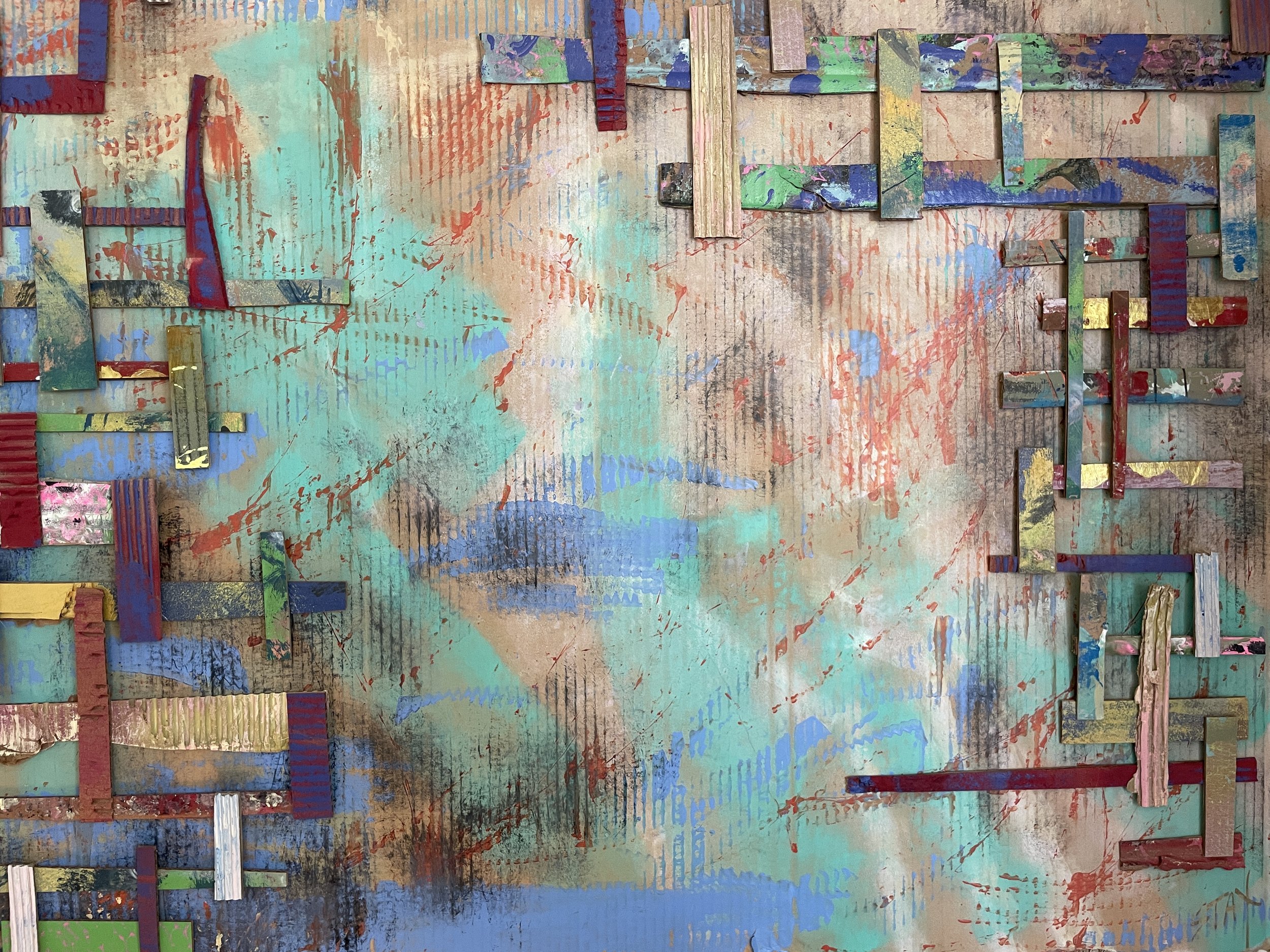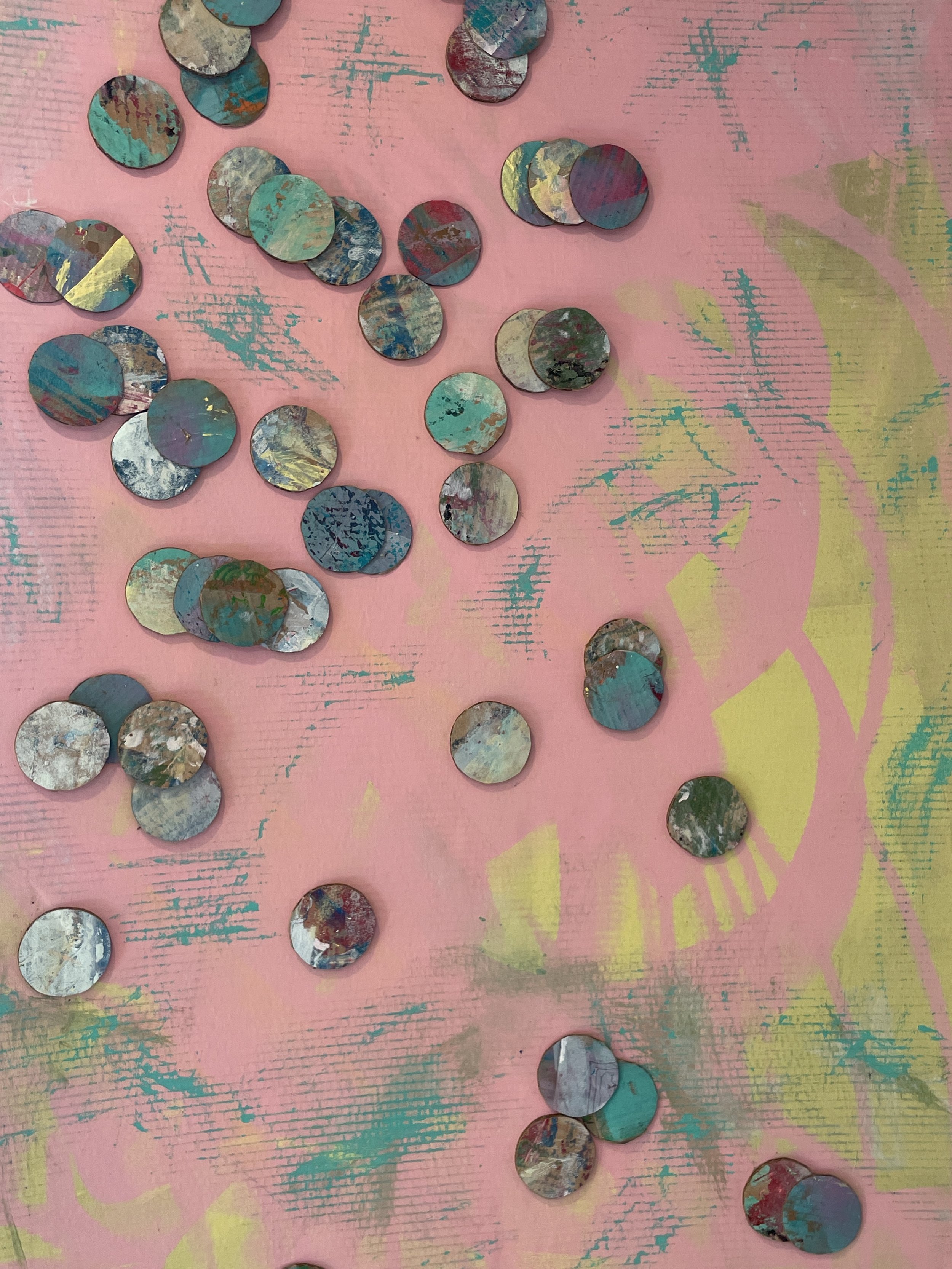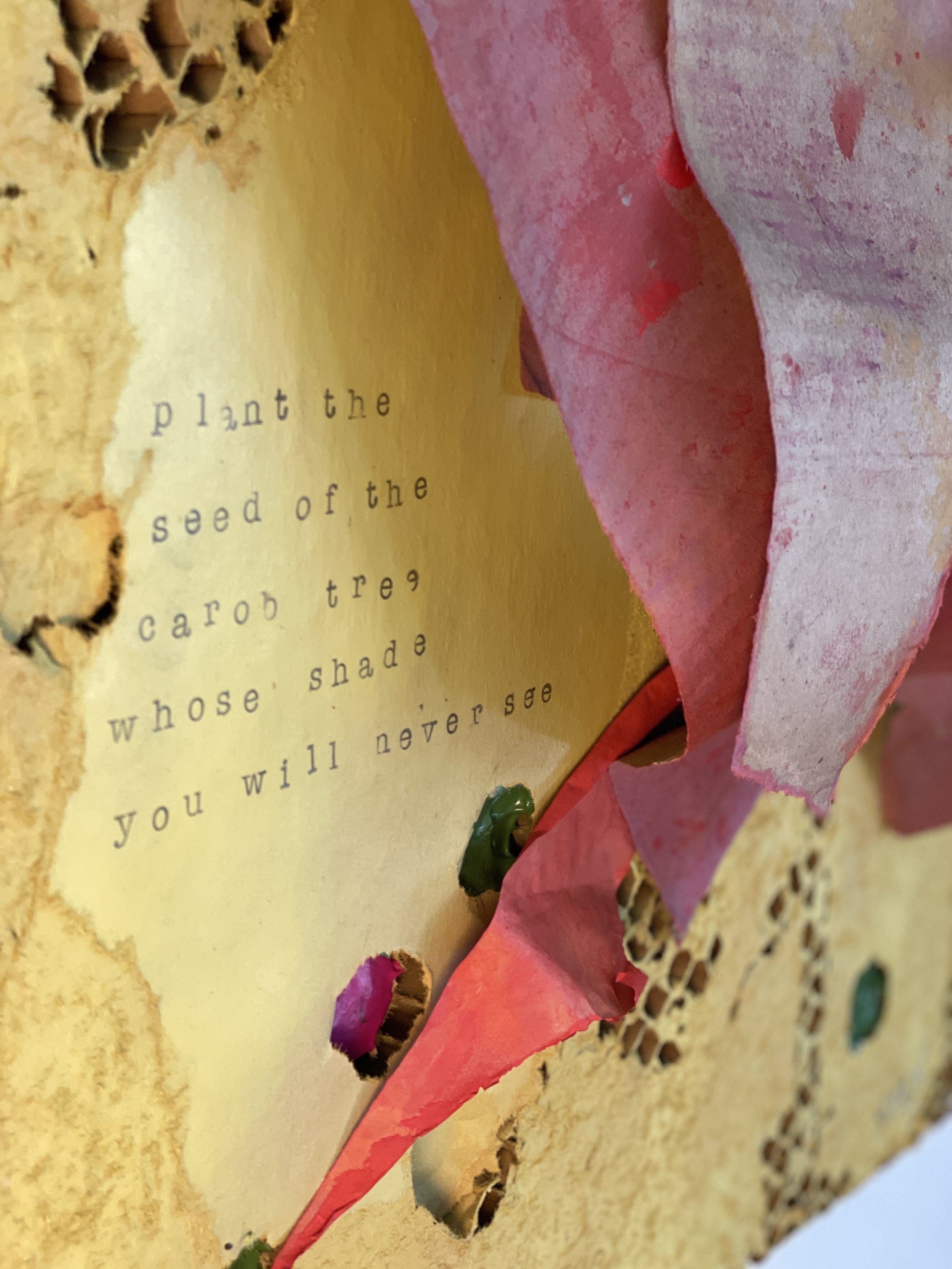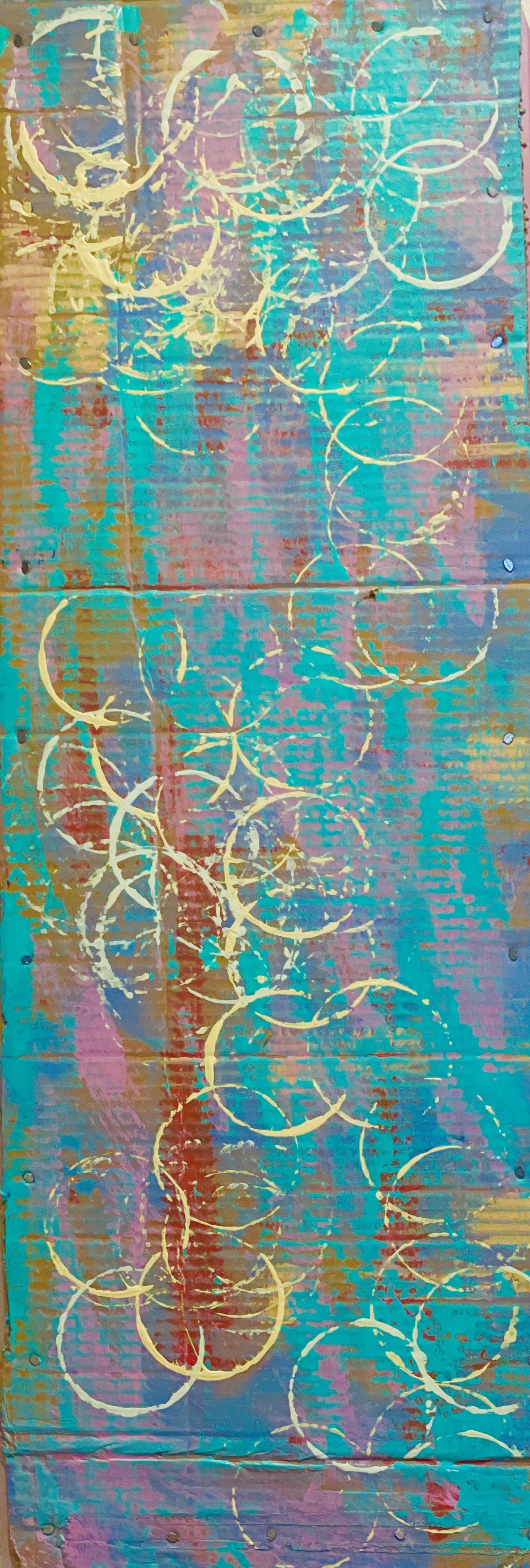BY the numbers
By the Numbers is a visual inventory of modern systems—made entirely from single-use cardboard. Each piece translates abstract metrics into something tangible: shipments, months, materials, moments.
These works were built from packaging used once and discarded, then reassembled to show what often goes unseen: the scale, pace, and possibility embedded in everyday operations.
Designed for companies that move volume—logistics firms, retailers, sustainable brands—this series offers a new way of seeing impact. Not in spreadsheets, but on the wall.

FULL CIRCLE
37" x 63" | Acrylic on reclaimed shipping cardboard boxes
Fifty painted circles—each one representing a single-use box. That’s roughly how many packages the average American household receives in a month.
The cardboard in this piece came from boxes used once and then discarded. Still intact. Still strong. Still treated as disposable.
Fifty isn’t just a number—it’s a turning point. It’s the moment when consumption stops feeling personal and starts to look like a system out of balance.
Set against a backdrop of playful greens and pinks, Full Circle draws you in with joy—then asks you to look closer. What appears vibrant and celebratory is built entirely from cast-offs. The beauty is real. So is the question.
What happens when we see it all at once?
THE SEED OF THE CAROB TREE
25" x 30" | Acrylic on reclaimed honeycomb shipping cardboard
A young boy sat beneath the broad canopy of a carob tree, his cheeks sticky with its sweet pods. He was swinging from one of the lower branches, the kind that bends just enough to feel like it’s flying.
It was late afternoon when he saw an old man walking down the road, carrying a small spade and a pouch of seeds. The man stopped nearby, knelt in the dirt, and began to dig.
“What are you planting?” the boy asked.
“A carob tree,” the man replied, without looking up.
The boy scrunched his nose. “But they take forever. You’ll be gone before it grows.”
The man smiled at that. “I know,” he said. “But when I was your age, I spent whole days under a tree just like this one. I climbed its trunk. I hid in its branches. I ate more pods than I could count.” He leaned back on his heels and wiped his brow. “Someone planted it long before I was born. I’m just doing the same.”
The boy was quiet then. He looked up at the tree above him, at the light shifting through its leaves, at the branch that had held him without breaking.
And for the first time, he realized the sweetest things in life don’t always come from what we build for ourselves - but from what someone else once chose to leave behind.
THE PAUSE
35" x 42" | Acrylic on reclaimed shipping cardboard boxes
Twelve horizontal forms chart the months. A grid of vertical blocks suggests steady flow: shipments, decisions, deliveries, returns. And then—at the center—nothing.
Not an accident. A choice.
The Pause represents the moment a system steps back. When movement slows, even briefly, enough to see what’s really happening. The space in the middle holds that potential: for redesign, for reduction, for reinvention.
Built entirely from single-use cardboard, this piece transforms discard into data—showing not just what moves through a company, but when and how it might shift.
Because real change often begins with a single pause.
ring theory
32" x 36" | Acrylic on reclaimed shipping cardboard box, mounted on wood
You know the feeling—when you lift your coffee mug and see the ring it left behind. No coaster. Just a faint, wet mark on the surface. Unintended. Slightly embarrassing. A trace that says: something was here.
That’s what this piece is about.
Each pale yellow ring represents a shipment. A package that came and went. A system running exactly as designed—fast, seamless, and forgettable. Until you look closer.
Built from single-use cardboard, Ring Theory doesn’t accuse. It observes. It reveals what gets left behind, over time, when we don’t think about the coaster. The impact isn’t always loud—but it’s there.
For companies moving volume, this piece is a conversation starter: about traceability, about responsibility, and about what kind of mark you want to leave behind.
STANDARD UNIT
9 panels, each 8" x 8" | Acrylic on reclaimed shipping cardboard box, metallic accents, mounted on wood
Nine identical panels. A three-by-three grid—structured, scalable, and intentional. Like any system that works at scale, this piece is built on repetition. But it’s the breaks in the surface that tell the real story.
Each panel features torn cardboard—raw edges where stress once lived. And through every opening: gold. Not to cover the damage, but to highlight resilience. To recognize the strength built into every layer.
Standard Unit honors what happens behind the scenes of great companies—the invisible reliability, the flexibility under pressure, the values that show up over time.
The gold is not decorative. It’s a marker of excellence.
For organizations that move fast, think long, and care about what holds everything together, this piece is both a mirror and a message: what’s working isn’t always what’s seen first. But it lasts.




